5 Must-Knows Before Crafting Your Nutritious Homemade Dog Food
Fresher is better. As a dog parent, you might be itching to DIY a whole-food feast for your furry friend as she’s fed up with kibble day after day, or you are on the hunt for the right recipe using a variety of natural food, or concerned about their health and considering a homemade nutrient-dense diet as a solution.
But before putting on your chef’s hat, there are a few things you should be aware of to ensure your dog has a nutritious diet.
1, Homemade dog food can be the best or the worst
Two weeks ago, the world’s oldest dog, Bobi from Portugal, died at 31. The secret to his long life? Peaceful rural lifestyle with lots of love, and daily-made unseasoned human food.
While there's no definite answer on extending human and dog lifespans, similarities exist, such as a fresh diet. But a homemade diet for your dog provides more than freshness:
-
Optimal levels of nutrients: Whole food generally have more nutrients than commercially processed food because they are in natural state, are rich in fiber and contain a combination of vitamins, minerals, and antioxidants that work with synergy.
-
Easy to digest: The natural enzymes in whole ingredients aid in digestion, and the natural fiber promotes bowel movements, promoting a healthier gut.
-
Control over ingredients: You could eliminate additives and preservatives that could be found in some of the highly processed commercial dog food and ensure high-quality food for your dog.
-
Customization: Customizing your dog’s meal can address specific dietary requirements, such as obesity, liver disease, and digestive problems.
-
Bonding: The process of preparing homemade meals can strengthen the bond between you and your dog.
Even with these advantages, veterinarians often discourage homemade meals. Their primary concern include:
-
Lack of balance in homemade food: Dogs require over 40 essential nutrients. Without a background in nutrition, dog owners might be at risk of preparing meals lacking vital nutrients. Deficiencies in nutrients such as vitamin D and zinc could lead to health issues including compromised immune function and liver fat.
-
Time-consuming and expensive to maintain: To ensure the right balance of nutrients, you'd need to invest a significant amount of time weighing and measuring food, cooking and making it into batches. You might even have to purchase a fridge to store both prepared and raw food. Besides, some of the ingredients required can be challenging and costly to obtain.
-
Risk of contamination: Improper handling and cooking of homemade dog food can lead to contamination and foodborne illnesses for both the dog and the owner. Typical contamination includes salmonella and E. coli.
By understanding the reasons behind vets’ reluctance to endorse homemade dog food, you can try to navigate these drawbacks and prevent the worst-case scenario.
2, Grasp a full spectrum of vital nutrients for your dog’s diet
You might already know that a dog’s base diet should contain these essential nutrients: proteins and amino acids, vitamins, minerals, and fatty acids.
But to craft a complete and balanced diet, it's important to know about various nutrients and the foods that provide them. Let's explore this together with these infographics:
-
Essential Nutrients Required in Your Dog's Bowl
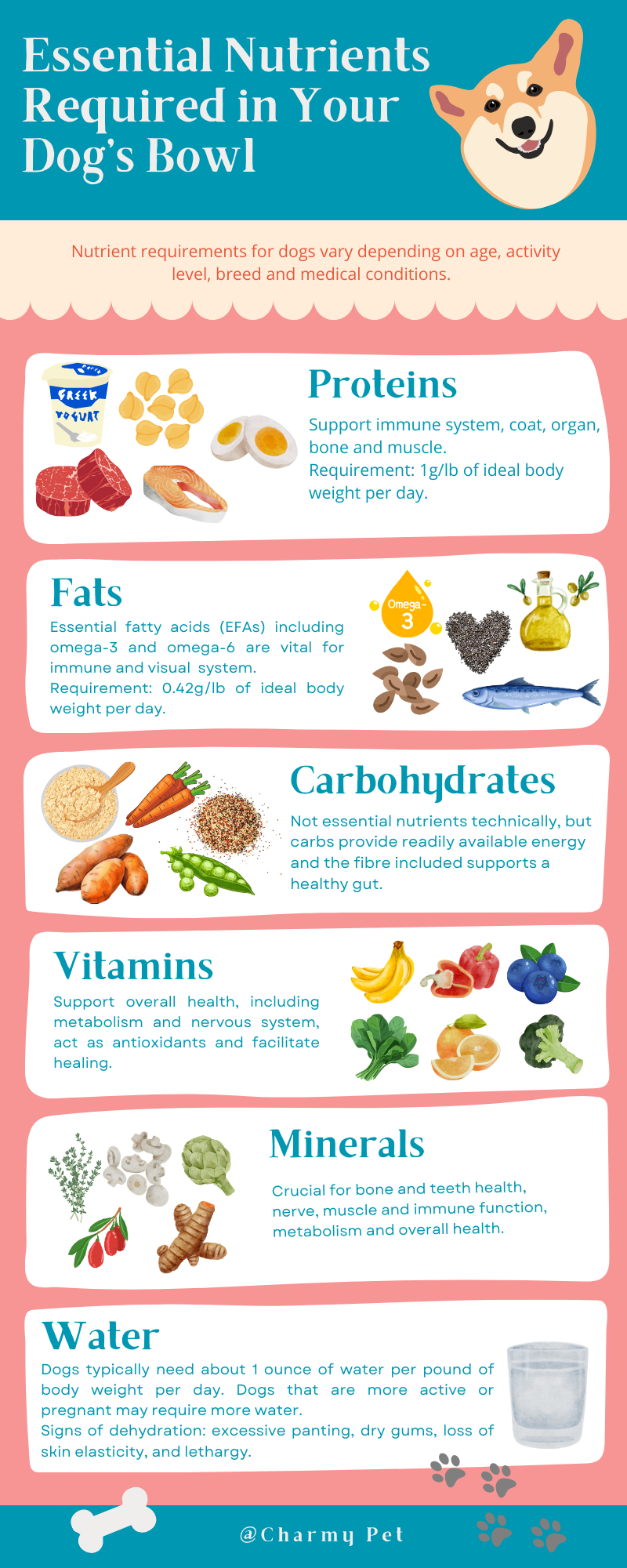
-
Essential Vitamins Your Dog Needs
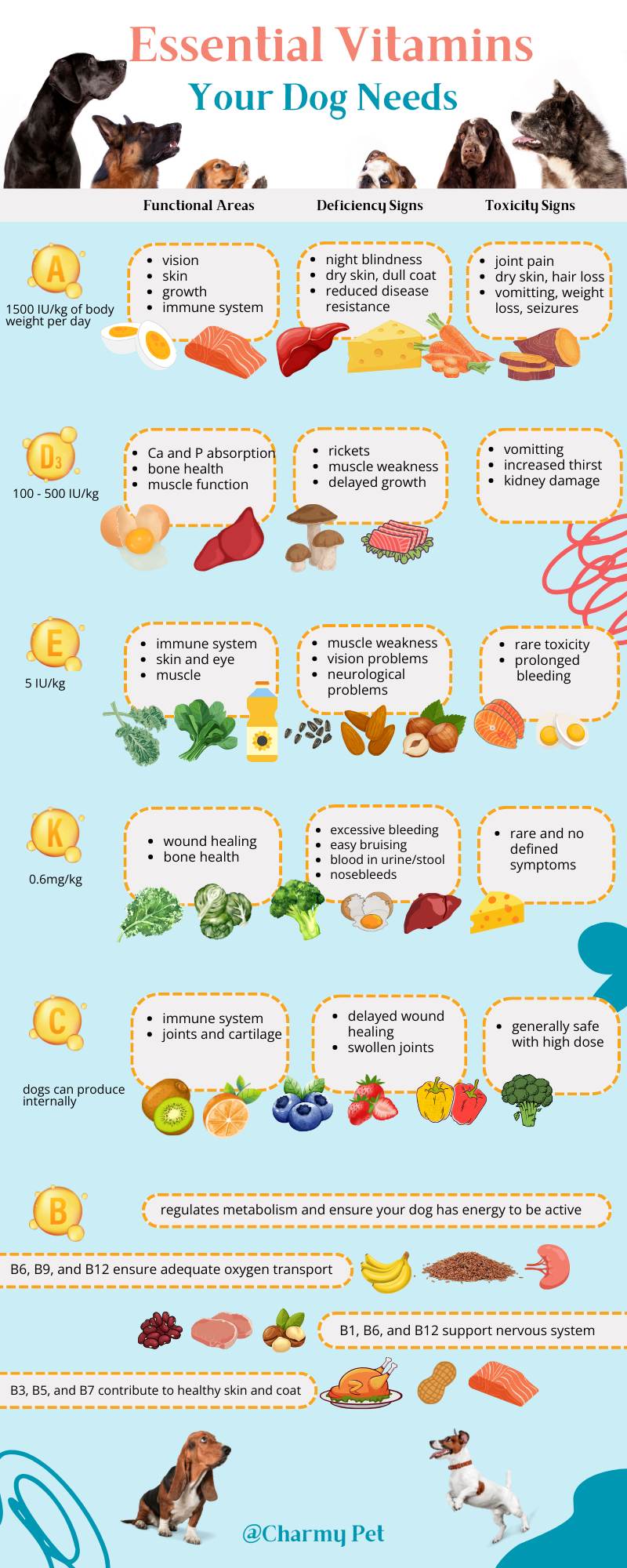
-
Essential Macro-Minerals Your Dog Needs
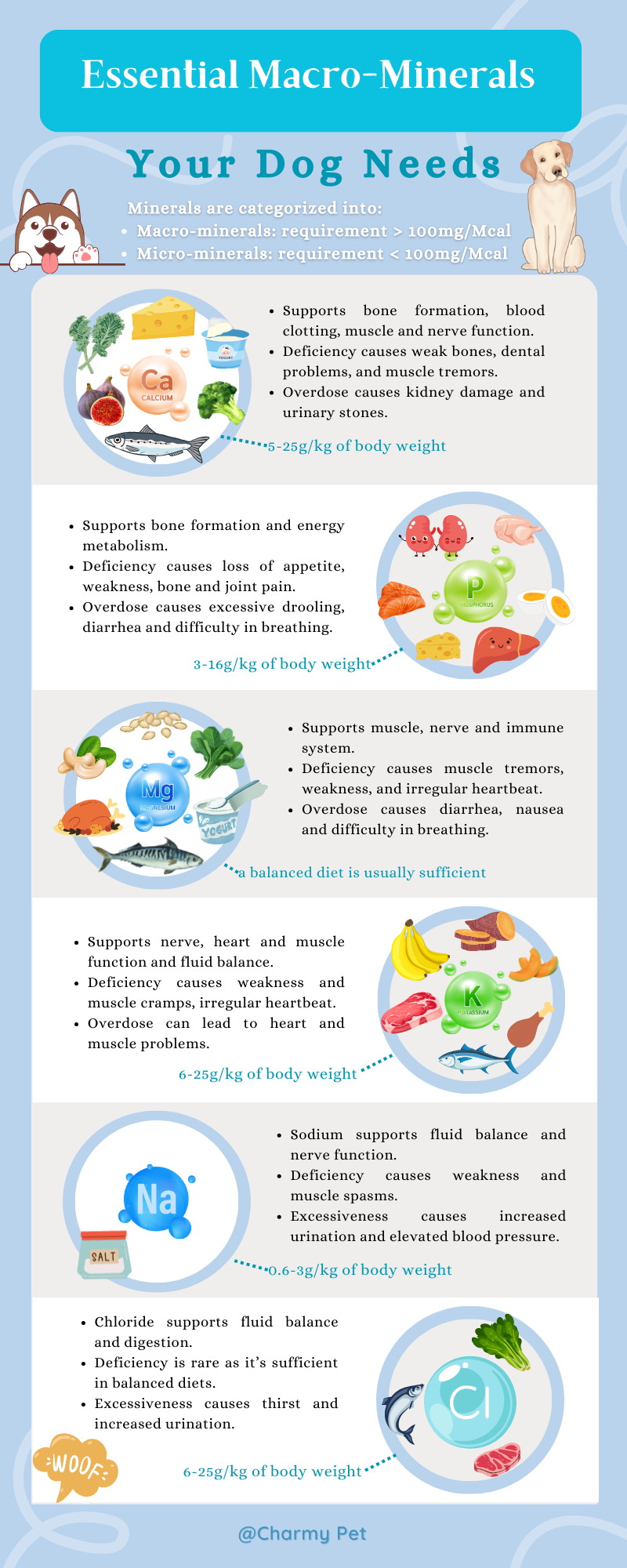
-
Essential Micro-Minerals Your Dog Needs

3, Find the right recipe for your dog and stick with it
There are so many recipes for homemade dog meal out there. However, it's best to be cautious as only a handful met the standards for essential nutrients set by some authoritative organizations such as the Association of American Feed Control Officials (AAFCO) and the National Research Council (NRC) .
So, what does a good recipe look like?
- It is clearly labelled with a nutritional adequacy statement: “This recipe was formulated to meet minimal nutrient requirements according to ____ standard” (AAFCO, NRC, or FEDIAF).
- It lists the ingredients and specifies their weights or volumes.
- It goes into the nitty-gritty, like the leanness of meat ("boneless, skinless"), the calorie content, and the breakdown of vitamins, minerals, amino acids, and fats.
- It guides you on the perfect cooking techniques - should you simmer, stew, or perhaps poach?

Photo by Karsten Winegeart on Unsplash
If your dog is dealing with health challenges, or if you have a specific health goal in mind, collaborating with some veterinary nutritionists can be a game-changer (though it might be more money-consuming), including nutritionists on ACVN and PetDIETS. They can craft personalized recipes tailored to your furry companion’s needs and well-being.
Once you’ve perfected the ideal recipe, stick with it! Avoid the temptation to experiment with substitutes, just like you might in your own cooking. Using a different type of oil or meat could introduce the wrong nutrients to your dog, disrupting the carefully balanced diet.
4, Overwhelmed? Explore fresh alternatives as your Plan B
Striving for a perfectly balanced diet day in and day out can feel overwhelming. Take a breather from the homemade meal hustle and explore some natural alternatives as your Plan B. Here, we've got five options for you, each with its pros and cons.
Frozen dog food
Feeding dogs a raw diet or “BARF diet” (Biologically Appropriate Raw Food) has become a popular trend as:
- It minimizes AGEs - mimics the natural diet of dogs’ ancestors with natural and unprocessed nutrients.
- It supports a diverse and healthy gut.
- High levels of omega-3 in certain raw foods improve coat and skin
- Chewing on raw bones and meat can help maintain dental health
To make the diet more balanced, you might still need to do more homework to choose meats, bones, organs and plants and spend more time planning and buying them. Besides, it could still bear bacteria concerns.
Want to know more about feeding your dog raw food? Check out What New Dog Parents Must Know About Feeding Raw?
Gently cooked dog food
This category is rising for preserving nutrients and flavor, and balancing the contamination problem.
“Gently cooked” implies minimal processing, but the specific methods used by different manufacturers can vary. Some might still involve high temperatures and degrade the nutritional value. Besides, to extend shelf life, preservatives might be added.
Dehydrated dog food
This category uses warm air to gradually remove the moisture from food. The temperature usually exceeds 104 degrees Fahrenheit, high enough to kill most protein enzymes.
However, quality of products in this category varies widely due to differing processing temperatures. Higher temperatures can affect nutrient content and form advanced glycation end-products (AGEs), which are linked to chronic health problems.
Freeze-dried dog food
If you are looking for a minimally processed, safe, shelf-stable canine feast, freeze-dried food could be a go-to. Unlike preparing raw food by yourself, it saves your time and is thus a good alternative to raw dog food.
They might dent your wallet a bit more, as companies use technology to process food under frozen conditions, lowering pressure and zapping moisture in one go.
Before serving, freeze-dried dog food usually requires rehydration by adding water.
Air-dried dog food
Air drying is a method similar to dehydrated food but without heat. However, as specific processing method might vary, it’s still worth questioning whether the company producing “air-dried” dog food is removing using heat or not.
If processed as it is claimed, this category preserves proteins, vitamins, and sensitive nutrients in natural ingredients, offering almost all the benefits of a raw food diet for pets.
Unlike freeze-dried food, air-dried pet food retains a bit of moisture to be palatable and often does not require rehydration before serving.
When exploring these options, investigate the nutritional adequacy, the quality of raw materials and company quality control. Double-check those labels for percentages. If anything's lacking, add the missing nutrients yourself.
5, Partner with your vet
Now that you’ve crafted the recipe for your dog, it’s time to team up with your vet and show them your newfound nutrition knowledge.
Vets usually juggle a lot during appointments - your dog’s overall well-being, dental health, diseases, and preventative care. But when you’re prepared with a well-researched recipe, they can enhance it considering your dog’s age, breed, weight, activity level, and health condition, making sure it's packed with all the right nutrients. They might also give you advice on whether or not your dog needs supplement besides the base diet.
Conclusion
All you aim for is to keep that tail wagging, ensuring your dog lives a happier, healthier, and longer life. Armed with savvy knowledge and handy tips, you are now all set to embark on the great journey of freshening up your dog’s bowl!
Works cited:
1, Tupler, T.. (2021). Dog Nutrition: Guide to Dog Food Nutrients. https://www.petmd.com/dog/nutrition/evr_dg_whats_in_a_balanced_dog_food
2, Habib, R. & Becker. K.S.. (2021). The Forever Dog: Surprising New Science to Help Your Canine Companion Live Younger, Healthier, and Longer


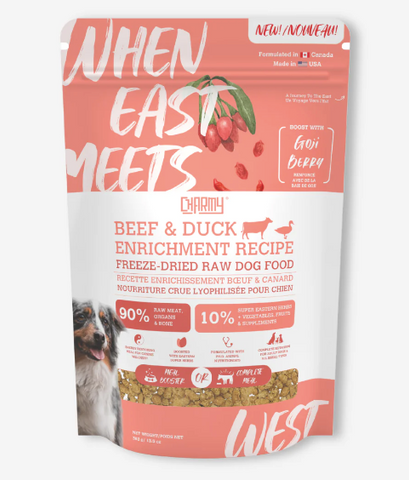
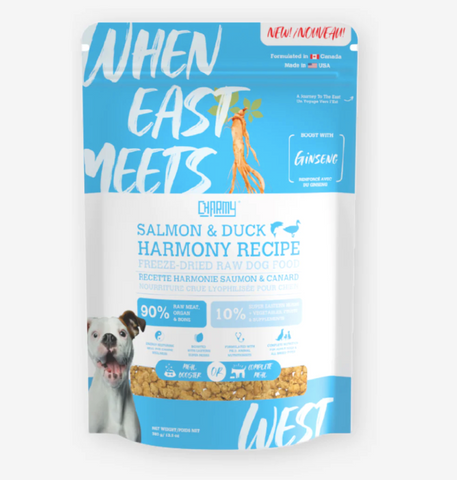
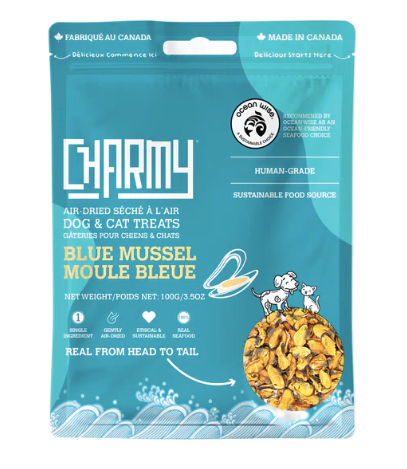
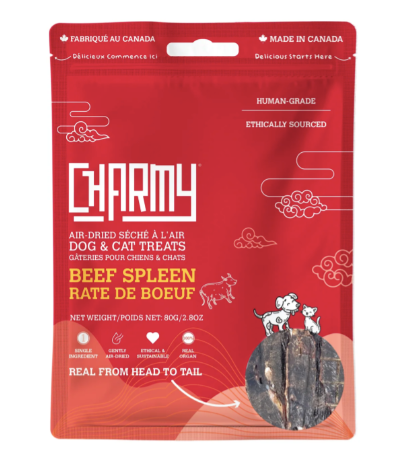
Leave a comment